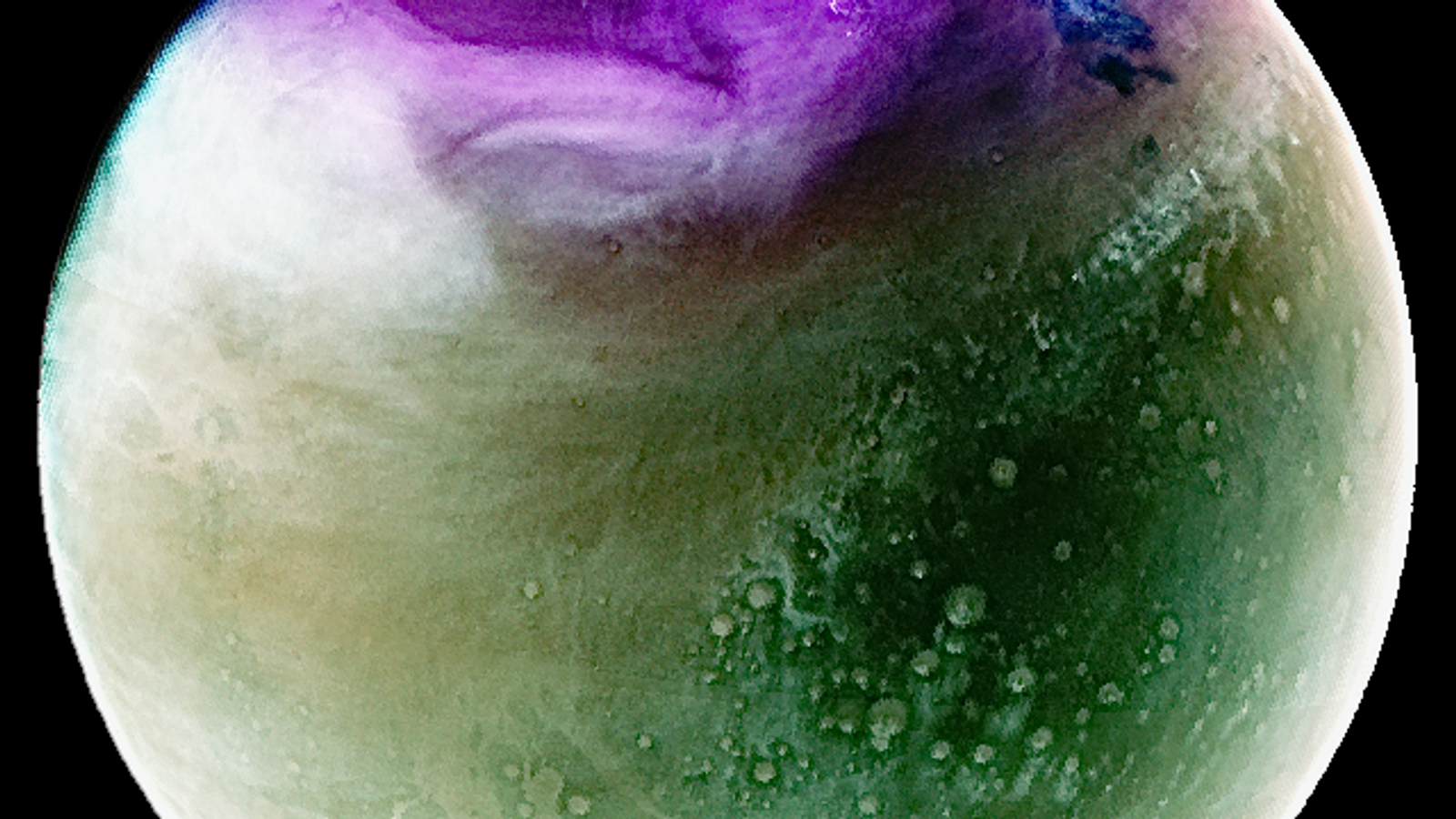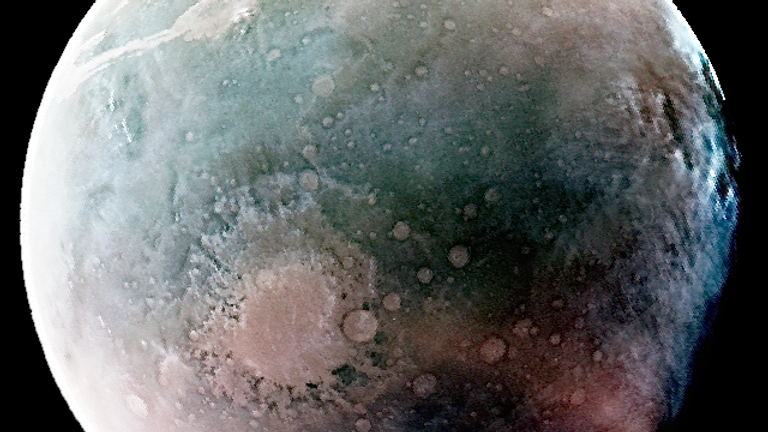NASA has shared two stunning ultraviolet images of Mars.
The pictures, taken by the space agency’s MAVEN (Mars Atmosphere and Volatile EvolutioN) mission, were taken at different points along the planet’s orbit of the sun.
One was snapped in July 2022 and one in January 2023, when the planet was at the near opposite end of its orbit.
Mars takes longer to get all the way around the sun than Earth does – 687 days rather than 365.
NASA scientists hope the ultraviolet view gives more insight into the red (or, in this case, multicoloured) planet’s atmosphere and surface features.
What do the different colours mean?
The measurements recorded by the imaging instrument used by MAVEN are invisible to the human eye, so NASA rendered them with varying brightness levels.
There are three and they are represented as red, green, and blue.
Using this colour scheme, atmospheric ozone appears purple or pink; white clouds and hazes are white or blue, and the planet’s surface can appear tan-like or green.
What do the images show?
The picture below is from last summer, when Mars passed closest to the sun.
The Argyre Basin, one of its deepest craters, appears in the bottom left filled with atmospheric haze; the vast canyons of Valles Marineris are in the top left; and the southern polar ice cap can be seen at the bottom.
The January 2023 image is the one at the top of this article.
Ozone has built up enormously at the top of the image, due to an abundance of white clouds that arrive during the winter’s chilly polar nights.
Valles Marineris can again be seen in tan in the lower left, along with many craters.
Read more:
NASA map lets you explore Mars in 3D
Most detailed images ever of Mars’ moon unveiled
NASA said the images would help explore Mars’s upper atmosphere, ionosphere, and interactions with the sun and solar wind, with the hope it will explain the loss of its atmosphere to space.
It will give scientists insight into the history of Mars’ atmosphere and climate, liquid water, and habitability.
MAVEN launched in November 2013 and entered the planet’s orbit in September 2014.

